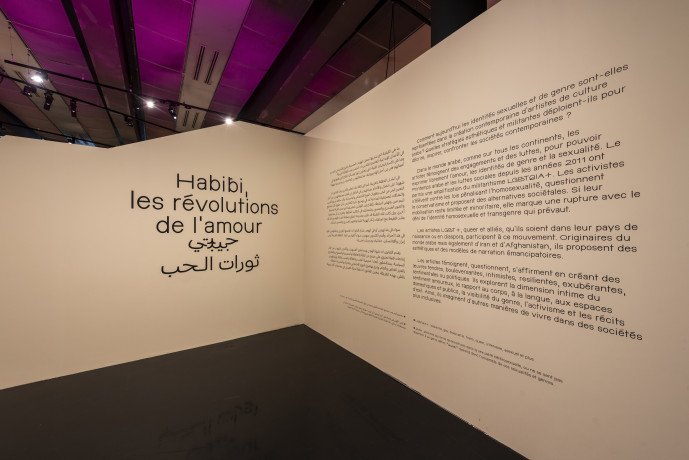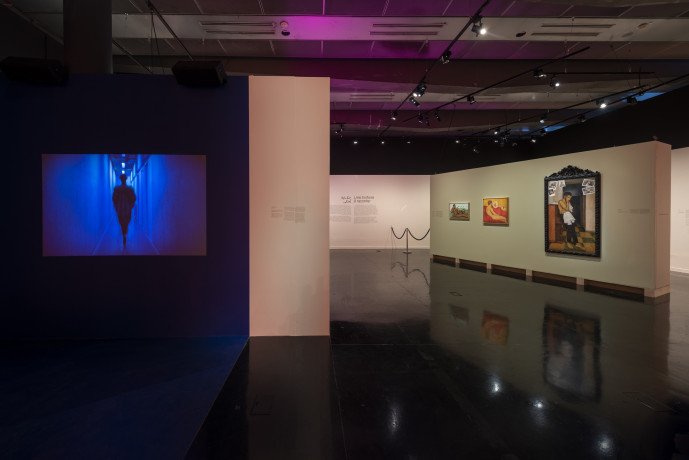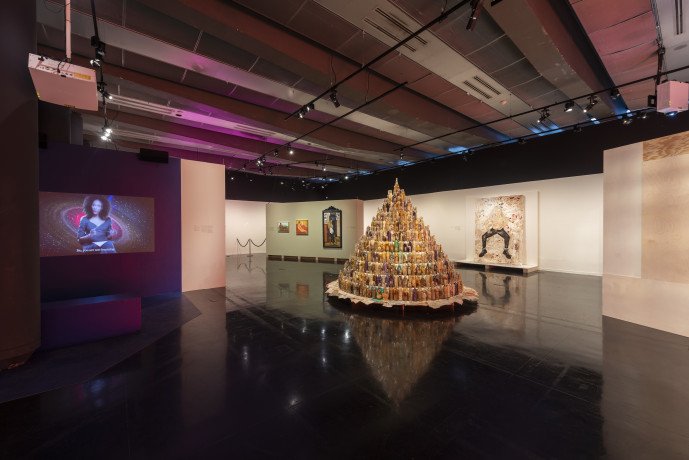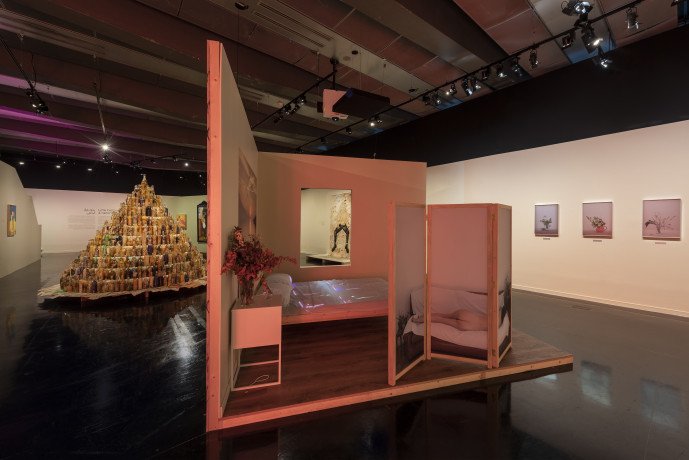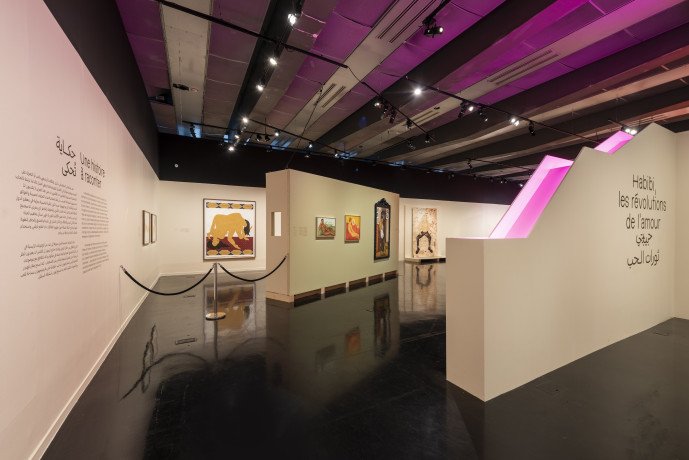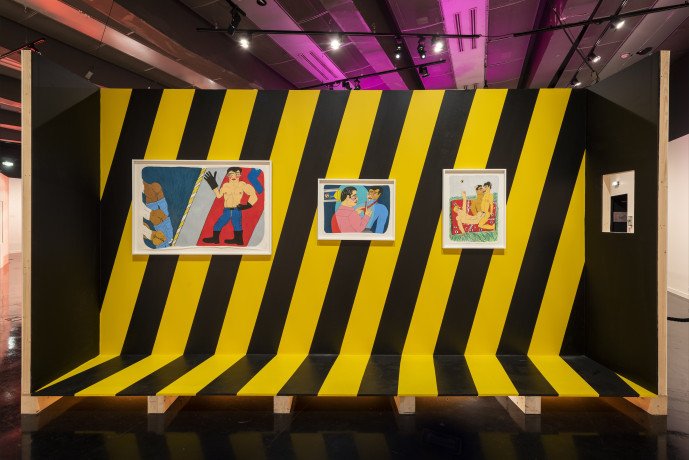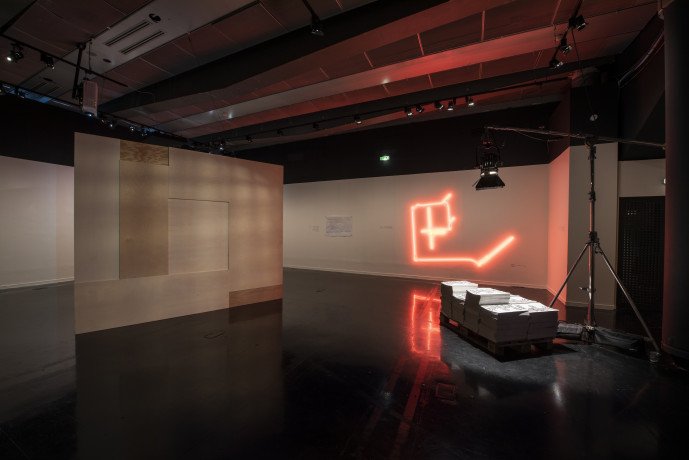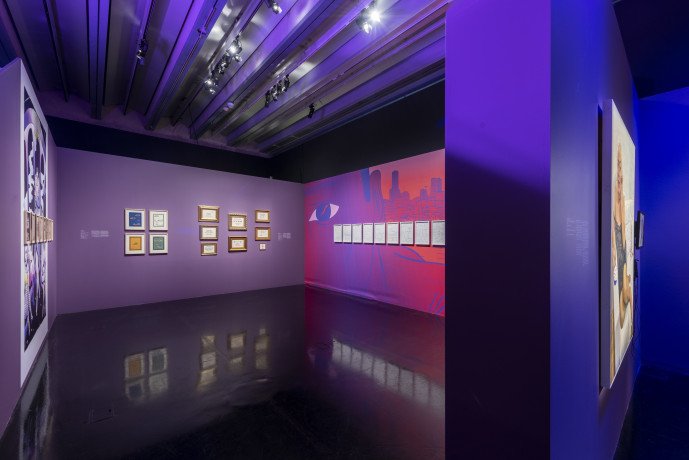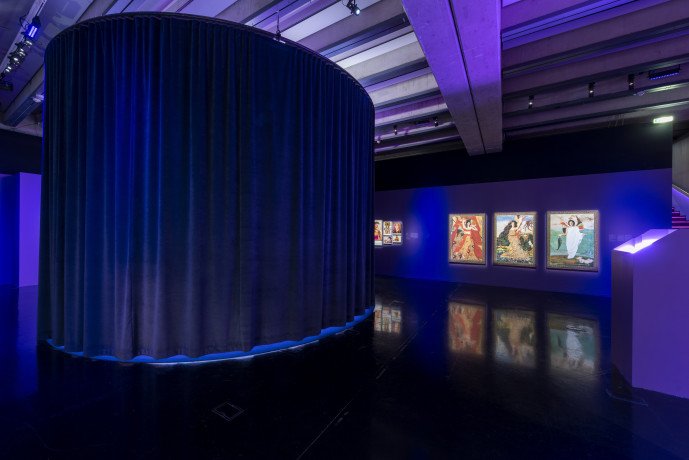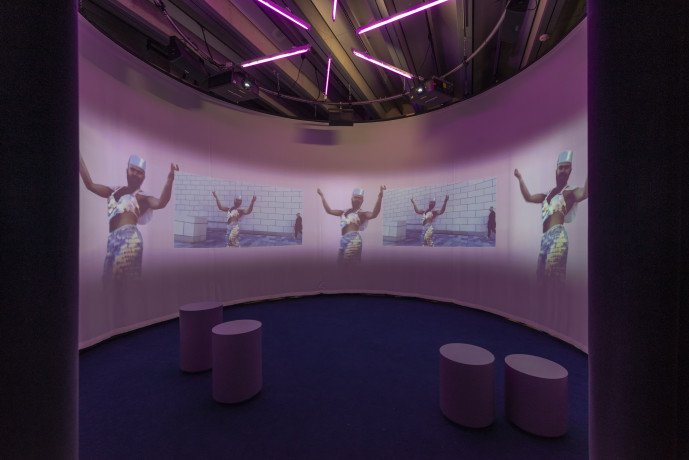
Habibi, les révolutions de l'amour / Habibi, the revolutions of love
Exposition prête à voyager
Available on tour
> Institut du monde arabe 27 septembre 2022 - 19 mars 2023 / September 27, 2022 - March 19, 2023
> Medelhbsmuseet, Stockholm 23 février 2024 - 23 février 2025 / 23 february, 2024 - 23 february, 2025
Poursuivant la mise en valeur par l’IMA des 1001 facettes de la culture arabe et de sa créativité, « Habibi, les révolutions de l’amour » présente des œuvres récentes autour des identités LGBTQIA+. Autant de nouveaux regards, exprimant avec force les interrogations sociales, personnelles et esthétiques qui traversent la création contemporaine.
Continuing its work showcasing the 1001 facets of Arab culture and its creativity, the IMA presents "Habibi, the Revolutions of Love" featuring recent works exploring LGBTQIA+ identities. These new perspectives powerfully express the social, personal, and aesthetic questions that permeate contemporary art.
CONTACT
Mario Choueiry
Responsable des expositions itinérantes
Touring Exhibitions
Tel: +33 (1) 40 51 38 80
The show’s questioning of personal freedoms and sexual identities reveals the deeply personal struggles, doubts and vulnerabilities of people whose art may be evidence of a profound social transformation in the Islamic world.
The New York Times, 19 octobre 2022
Comment les identités sexuelles et de genre sont-elles représentées dans la création contemporaine ? Comment circulent-elles ? Quelles stratégies esthétiques déploient-elles pour décrire et confronter les sociétés ? Photographie, peinture, vidéo, performance, littérature, animation…: la parole aux artistes, et à leur récit singulier qui dessine leurs doutes et leurs fragilités.
Comme dans de nombreuses autres régions du monde, des luttes se jouent dans le monde arabe pour pouvoir exprimer librement son identité de genre et sa sexualité. Les soulèvements populaires de ces dernières années ont profondément bouleversé les sociétés et ont permis une amplification du militantisme LGBTQIA+. Les artistes, qu’ils se trouvent dans le monde arabe ou dans les diasporas, participent à leur manière à ce mouvement. Ils questionnent, témoignent, se battent en créant des œuvres bouleversantes, intimistes ou exubérantes, de résilience ou de lutte, sentimentales ou politiques, qui explorent leurs identités mais également leurs secrets, leurs émotions, leurs souvenirs et leurs rêves. Dans un monde où la présence des LGBTQIA+ n’est pas toujours acceptée, voire sanctionnée, l’exposition montre les territoires explorés par ces artistes : l’intime, le quotidien, le rapport au corps, l’engagement.
À travers ces récits qui se jouent des règles et de la norme, il est aussi question de l’émancipation individuelle, de la liberté des corps, de la liberté d’exister dans sa différence et de la liberté d’aimer. En cela, les artistes exposés à l’IMA dépassent les genres, et touchent à l’universel.
How are sexual and gender identities represented in the contemporary creation of artists from Arab cultures? What aesthetic and socio-political conscious strategies do they use to describe, inspire, and confront today’s societies? In the Arab world, as on all continents, artists embody and convey the commitments and struggles to freely express love, gender identities, and sexuality.
The Arab Spring and social movements since 2011 have enabled the strengthening of LGBTQIA+ activism. Activists are now speaking out against the laws that criminalize homosexual acts, questioning conservatism, and proposing societal alternatives. While their mobilization remains limited and in the minority, it nevertheless signals a break away from the prevailing repudiation of homosexual and transgender identity. LGBT+, queer and allies, whether in their country of birth or in the diaspora, are participating in this movement. Originating from the Arab world, but also Iran and Afghanistan, the artists presented here propose aesthetics and models of emancipatory narration.
This contemporary perspective makes it possible to apprehend the political, social, intimate, and aesthetic questions that permeate current creation with an emphasis on sexualities and non-heteronormative genders. Through this prism, the exhibition explores the concepts of individual emancipation, the freedom of the body, the freedom to exist in one’s difference, and the freedom to love as one so wishes. The aim is also to provide new avenues of reflection and action regarding how best to cohabit in society. In this sense, it questions the gaze that society, and the individual, whoever they may be, have of the LGBTQIA+ community in a world where their presence is still not accepted, or threatened.
Queer artists or “allies” come together on this occasion to bear witness and make their voices heard. Today, queer themes in the work of artists from the Arab-Muslim world and its diasporas develop and articulate aesthetics and emancipatory narrative models that challenge the idea of norms, in particular those relating to gender. Their works combine questions of the intimate with politics, thereby weaving new models of identification and life.
COMMISSARIAT / CURATORS
Elodie Bouffard, responsable des expositions
Khalid Abdel-Hadi, directeur éditorial de My Kali magazine
Nada Majdoub, commissaire associée

